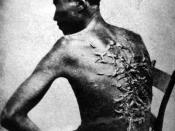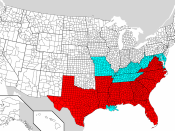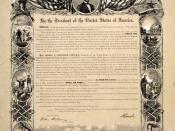As slavery rapidly increased between 1790 and 1860 by 3 million people in the United States of Amereica to a total of 4 million, so did support for the abolitionist movement, a group that sought to end the enslavement of blacks within the South. Though they did help to free thousands of slaves and moved whites towards the idea of equal rights, were they really that sucessful and did they really contribute that much to the final Emancipation Proclamation of January 1863? I believe that their efforts can be seen as both encouraging and discouraging the end of slavery.
It was the nineteenth century that finally began to bring around change in the way whites viewed blacks. Whilst slavery had ended in Britain in 1833, and in France in 1848 it continued to plague the Southern states of America. Slavery was made a vital part of regional and national economics after the cotton gin was invented in 1793 and so spread westwards with the growth of the industry.
However, as slavery flourished to support the cotton industry, the government reacted over this period of time with various acts to deter the use of slaves. In 1787 Congress banned slavery in the Northwest Territory (Ohio, Indiana, Illnois, Michigan, Wisconsin and the eastern part of Minnesota) leading many blacks to freedom. More significantly, the trade of slaves from Africa to the US had ended in 1808 as dictated by Congress.
A clear illustration of the abolitionist movement being effective is, what was known as, the 'Underground Railroad'. This was a collection of regional networks, which helped around 1,000 slaves escape into the North and Canada, a year. Many former slaves supported this heavily, for example Frederick Douglass. Though there were also many white abolitionists who sheltered slaves trying to escape, for...


